Thu, 12 Mar 2015 . Last updated Thu, 25 Jun 2015 09:01

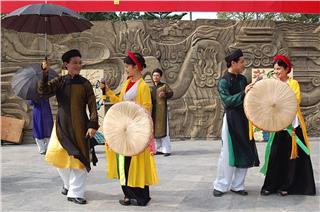
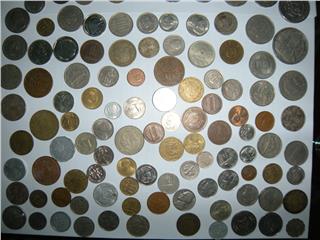
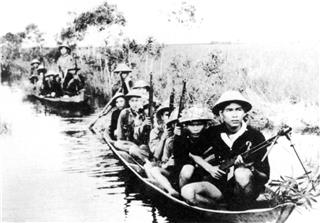
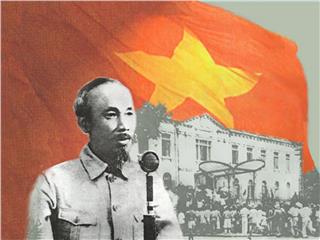
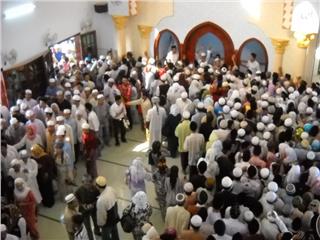

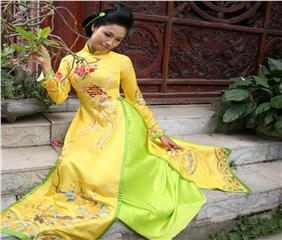

The appearance of markets and trade centers is the clearest proof for the existence of coins. In prehistoric times, human beings did not use coins to buy goods but exchanged their personal assets for goods. During 9,000 - 6,000 BC, animals were the main exchange unit, then agricultural products. Ark clam shells used to be considered a currency. At that time, a powerful person was the one who had many ark clam shells. Then, the currency was used in African and North American countries. The appearance of coins made a great impact on the establishment and development of big economic and cultural centers in the country.
Luy Lau (Thuan Thanh district, Bac Ninh province) dates from the 2nd century BC. It is located in the center of the Red River Delta region. Luy Lau was the meeting place of traffic routes. It connected Jiaozhou and Hepu. Apart from managing Luy Lau, Shi Xie also opened schools to propagate Han-Tang culture and train talents for the country. In an excavation, archeologists found ceramics bearing the typical features of Dong Son - Phung Nguyen ceramics. Ceramic vases are the proofs for the glorious past of Luy Lau ancient citadel.
In the time of Shi Xie, not only Han culture and Confucianism were introduced into our country through Luy Lau. Indian monks came to Luy Lau to propagate Buddhism, making it a major center for Buddhism. Luy Lau, the capital of Jiaozhi, then Jiaozhou, was the most ancient cultural, political, economic and Buddhist center of the country. Coins found in this land show that Chinese coins were mainly used in this period. Those proofs remind us of a prosperous stage of this land.
As recorded, the first Vietnamese coin was cast in the Early Ly dynasty. King Ly Nam De had Thien Duc thong bao coin cast in 541. However, until 602, the dynasty ended and the coin was lost. According to researchers, from the 10th century to the 15th century, the feudal dynasties of Vietnam such as Dinh, Le, Ly, Tran, Ho, etc., were established and developed. After suppressing the other 11 lords, Dinh Bo Linh or Dinh Tien Hoang ascended the throne named the reign’s years Thai Binh (970 - 979) and moved the capital to Hoa Lu (nowadays Ninh Binh). The King paid great attention to the establishment of villages, expanding cultivation areas and supporting people to develop their craft of growing mulberries, feeding silkworms and embroidering silk.
People needed a currency to trade. And Thai Binh hung bao coin was made. This was the first coin used in the Dinh dynasty. The coin started the country’s coin casting. The coin in the Early Le dynasty was named Thien Phuc tran bao. According to researchers, the two coins are similar to each other. Although they were only used in the Red River delta region, they played an extremely important role in the development of Vietnam economy.
According to Associate Professor – Doctor Hoang Van Khoan, feudal dynasties had their own coins but the coins were not used widely, which shows that people did not regularly use coins but objects in their exchange activities. The birth of the first two Vietnamese coins showed the country’s cultural exchange with other countries in the region. According to Dai Viet su ky toan thu (Complete Annals of Dai Viet), money was used much in the reign of King Ly Thai To. Salaries and taxes were paid by money.
The coastal traffic route facilitated trade activities between Vietnam and other country in the region. Until 1149, King Ly Anh Tong had Van Don trading port established to exchange goods with traders. Local people were instructed how to build strong ships so that they could catch seafood. Then, ships anchored along the coastal traffic route from the South to the North. Goods exchanged at the port were seafood and porcelain wares. Porcelain wares of the Ly dynasty have beautiful shapes and motifs.
According to a Japanese historian who researched on Van Don, porcelain wares of the Ly dynasty were popular with people in many countries. Van Don trading prot developed strongly during the three dynasties of Ly, Tran, and Later Le. Many excavations were carried out in this sea area and many valuable objects were found. For example, ceramics and porcelain wares which date back to the Song dynasty and especially about 200 coins dating from the Tang and Song dynasties. Then, many coins were made to show the prosperity of the country. Kings paid great attention to printing their reigns’ years on coins.
According to some historical documents in 1396, 4 years before the Ho dynasty replaced the Tran dynasty. Thong bao hoi sao note was issued. However, Vietnamese archaeologists have not yet found it. Ho Quy Ly had a certain number of coins named Thanh Nguyen (1400 - 1401) issued to introduce the new name of the reign’s years. Moulds used for making coins are often made of soil or iron. Moulds and coins are likened to yin and yang.
According to Oriental philosophy, to show the harmony between the sky and the ground, human beings made coins which are round and have square hotels in the middle of them to replace coins made of ark clam shells. Apart from Vietnamese coins, Chinese ones were considered a foreign currency. Coins are a witness to a prosperous period of the country’s economy and the process of exchanging currencies between Vietnam and other countries in the region from the 10th century to the 15th century. The appearance of coins affirms the independence of feudal Vietnamese dynasties.
Source: VTC10 - NETVIET

 Đặt vé máy bay cho người Việt?
Bấm vào đây
Đặt vé máy bay cho người Việt?
Bấm vào đây
Our service uses cookies for technical, analytical and marketing purposes. See our Cookie và Privacy policies for more information. If you agree to this, just keep browsing.


